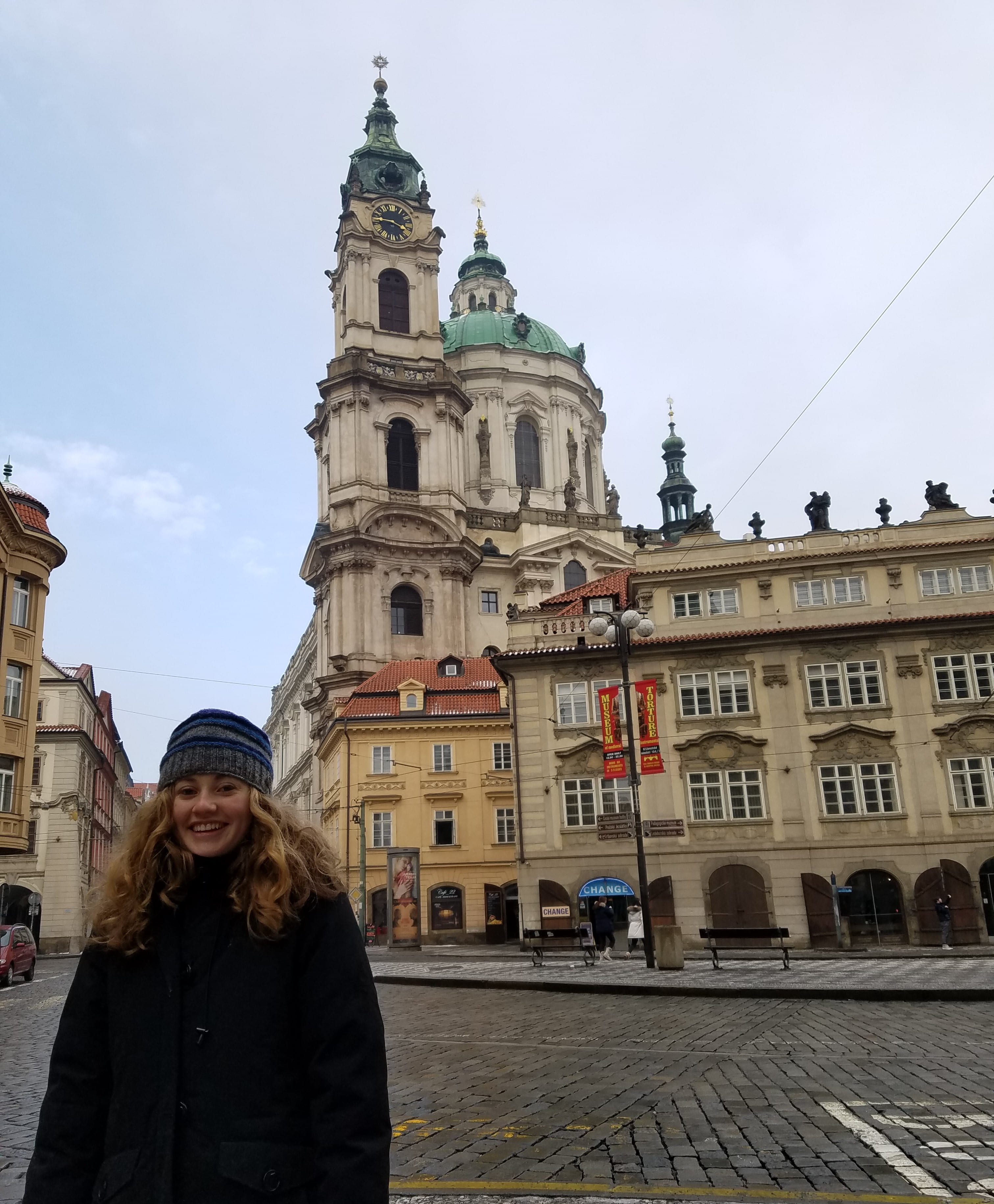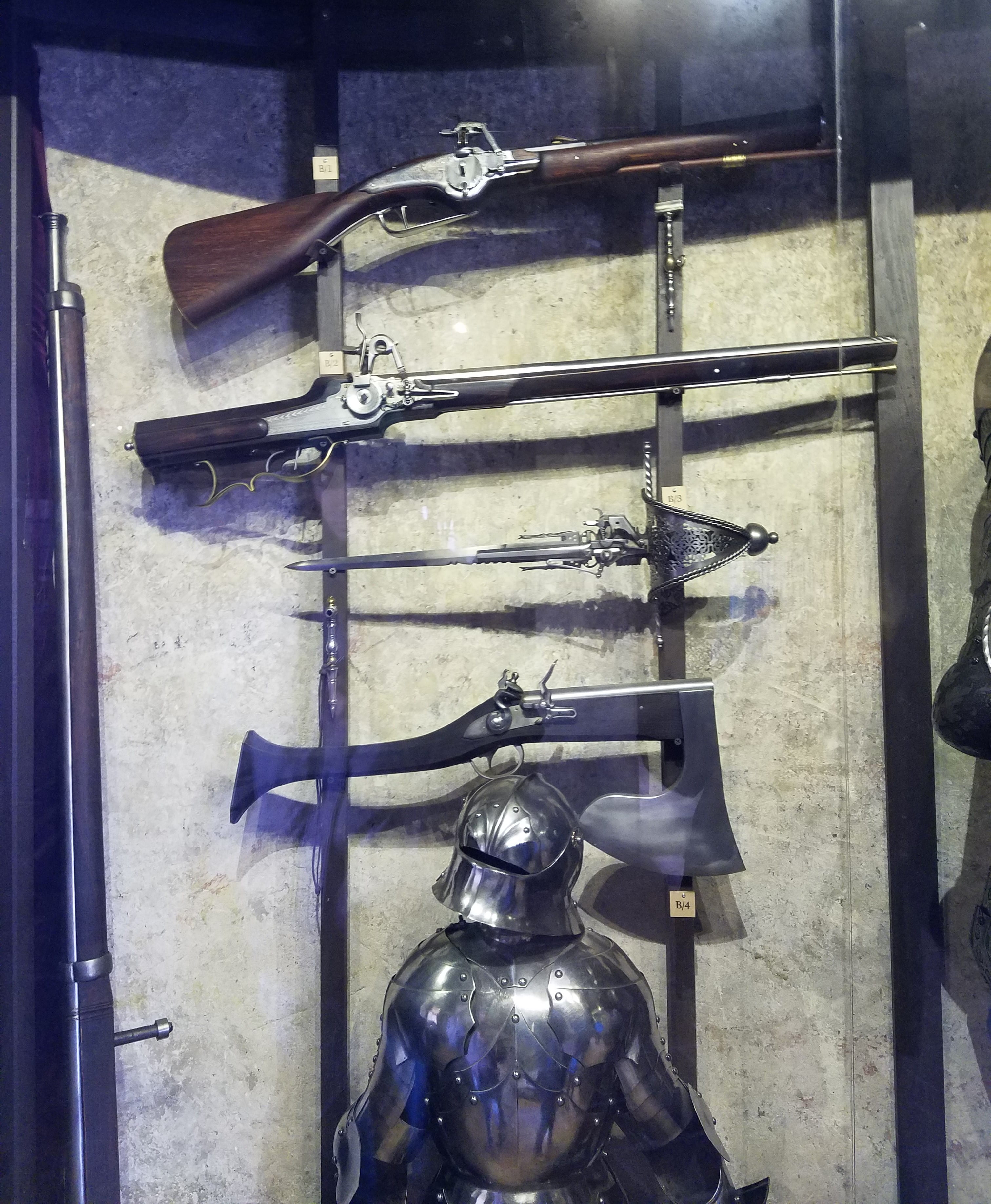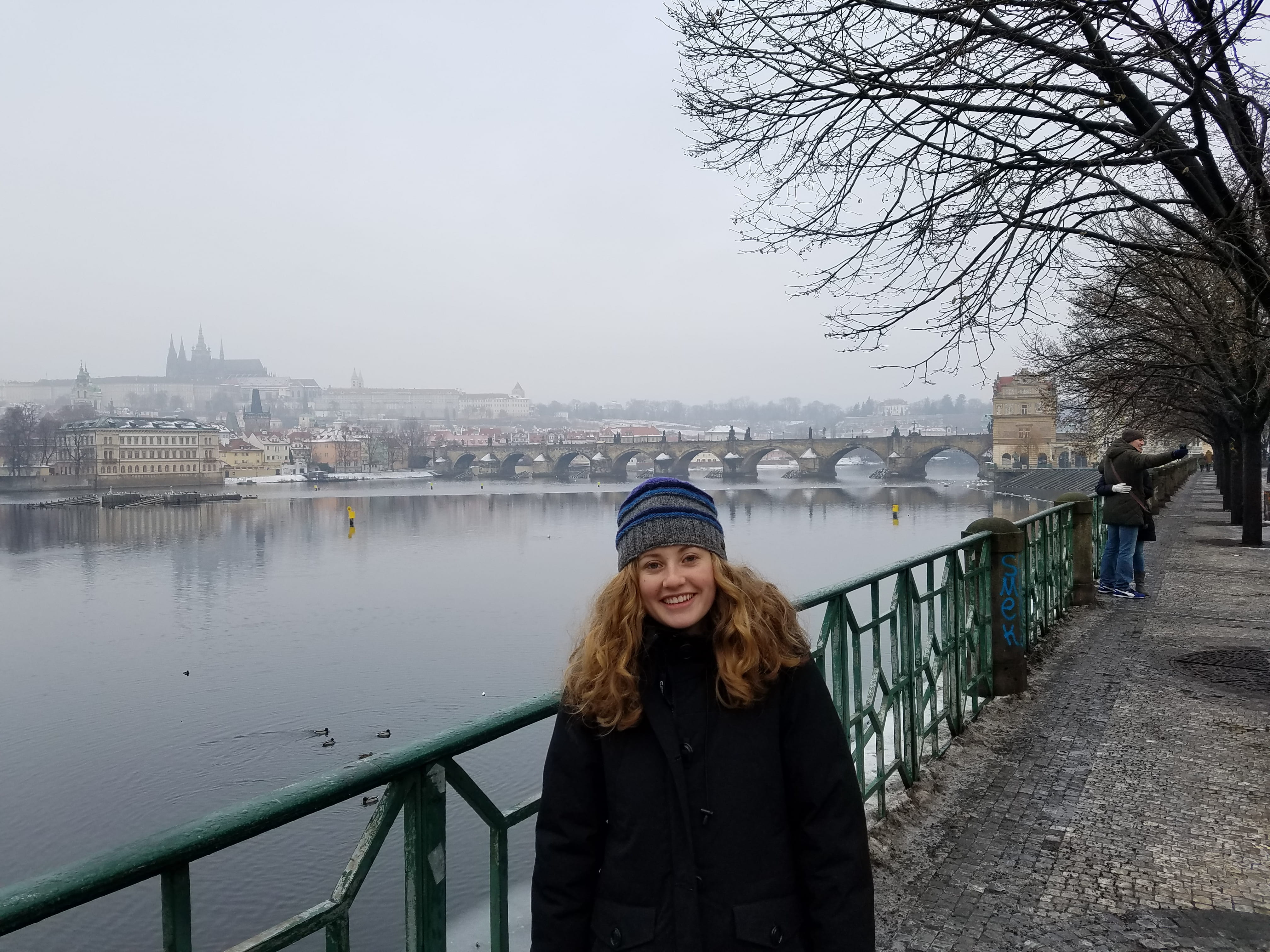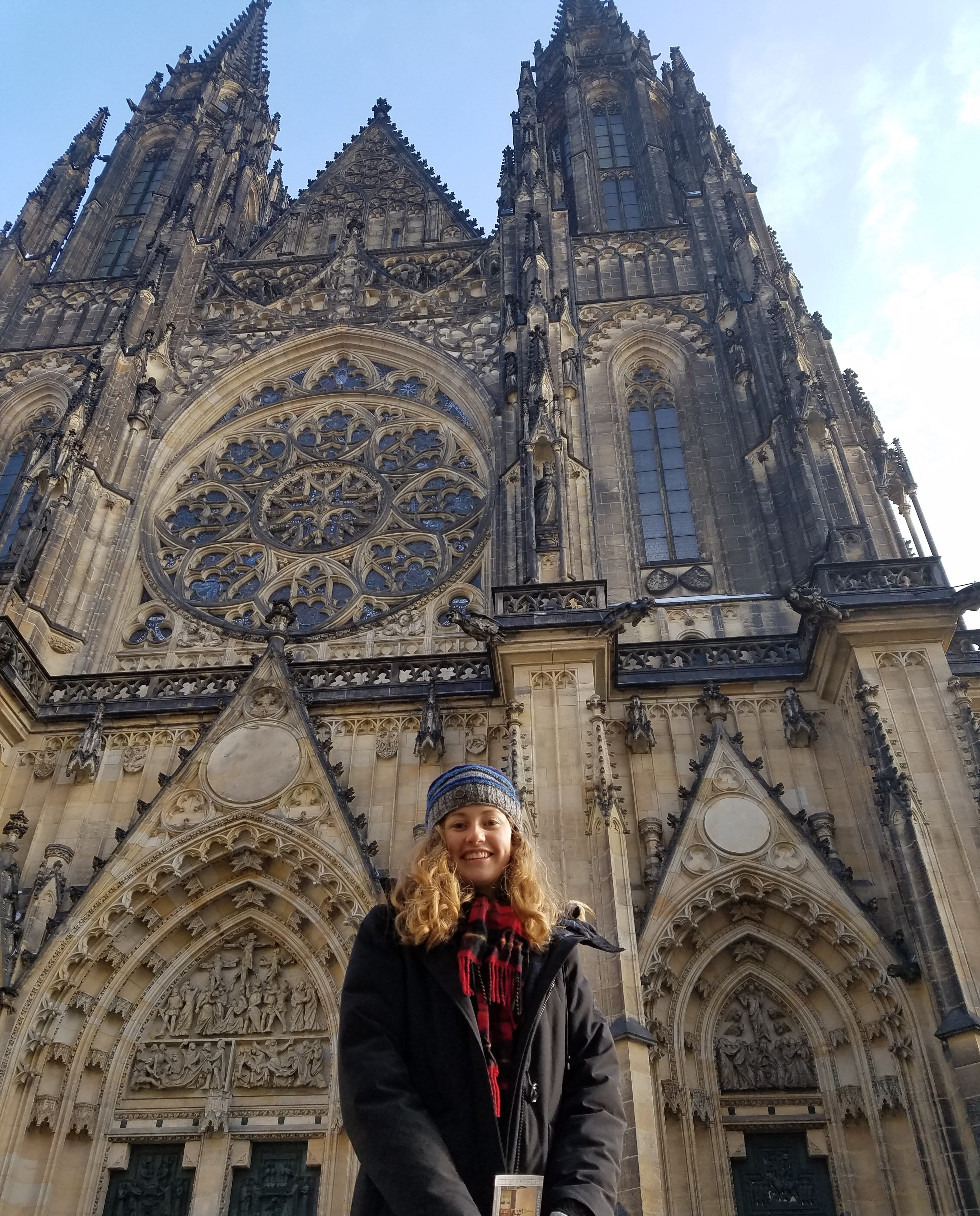Prague and its people have been through a lot throughout the ages. From the 30 Years’ War to World War I, then from Nazi occupation to Soviet occupation, the Czech people have seen it all.
Pulling up to Prague after 18 hours of train rides, sleeping in train stations, and avoiding the cold, the city seemed to glow with an aura of warmth. The city itself sports amazing architecture in basically every building, beautiful stone facades adorning the upper levels of convenience stores and the like. Despite the slight drizzle, our arrival felt like something out of a fairy tale.

The fairy tale feeling continued the next day, after having some sorely needed shut-eye, as we ventured across the bridge to the castle. The streets were lined with cobblestones and winding between rows of low-lintelled shops and pubs. The castle grounds contained very interesting museums and sights, including the amazingly spired and flying-butressed St. Vitas cathedral. We walked along the Golden Way, which showed examples of what life was like for those who worked on the castle staff that weren’t members of the nobility such as seamstresses, or guards. Inside the castle however, we were able to see the high-ceiling rooms, as well as read up on the history of the place.

One of my favorite parts of the castle was a small, unassuming room off the main throne room area. It was my favorite because it is home to one of the most famous defenestrations in history. (Defenestration is a word which means the act of throwing someone out a window.) In the castle there was to be a meeting between some important Catholic regents and some Protestant representatives. During the meeting, an agreement was not reached, and the regents promised that they would talk to their superiors to come to a solution. However, the Protestants, knowing that the Catholic leaders would not take kindly to their demands, decided to defenestrate Count Jaroslav Borzita of Martinice, and Count Vilem Slavata of Chlum, through a window with a 70 foot drop beneath it. Although they survived the fall, this incident is attributed to being a cause of the 30 Years’ War.

In the old city, close to the famous astronomical clock, we stumbled across one of my favorite museums I have ever visited: the Communism Museum. The entrance way was adorned with posters of a cuddly teddy bear holding an AK-47 and the slogan “Dream, Reality, Nightmare.” During the post-WWI period, combined with the economic turmoil of the market crash and Great Depression, the Czech people voted their communist party into office. At the time it seemed like the only option. Soon every seat in the government was occupied by communist party members, and those opposed were falsely accused of crimes they didn’t commit and were imprisoned. In WWII, the Czech region was taken over by Nazis, and later liberated by the Soviet Union. That’s when things started to get really bad for the Czech people.
The Soviet Union, in liberating the Czech republic, was able to gain much support for establishing Soviet communism in the region. They had a non-uniformed police that would make sure that no one spoke out against the party. People were not allowed to leave the country, and those who knew that people were defecting to other countries were imprisoned for not speaking out. Political enemies were tortured and burned alive, their ashes used to melt the ice on busy roads. The new communist system did not allow for imports and exports, and therefore basic essentials like food, soap and other goods were nearly impossible to find in stores. Media was controlled exclusively by the Soviets.

It wasn’t until the late 60s, that groups of undergraduate students began to speak out against the party. Using techniques such as self-immolation, doing the work that strikers refused to do in Soviet-organized strikes, and having marches, they were able to spread their message of freedom. The government responded with violence, with secret police infiltrating and beating the protesters. It wasn’t until 1991 that they became truly free of communism and began their capitalist lifestyle.
The museum was cool because it showed a Prague citizen’s perspective on such violent events that were happening in his lifetime. Prague only became free six years before I was born. It was amazing to read about and honor the people that fought to make their own home country a better place for their children, and for tourists like me that can visit now but couldn’t thirty years ago.
